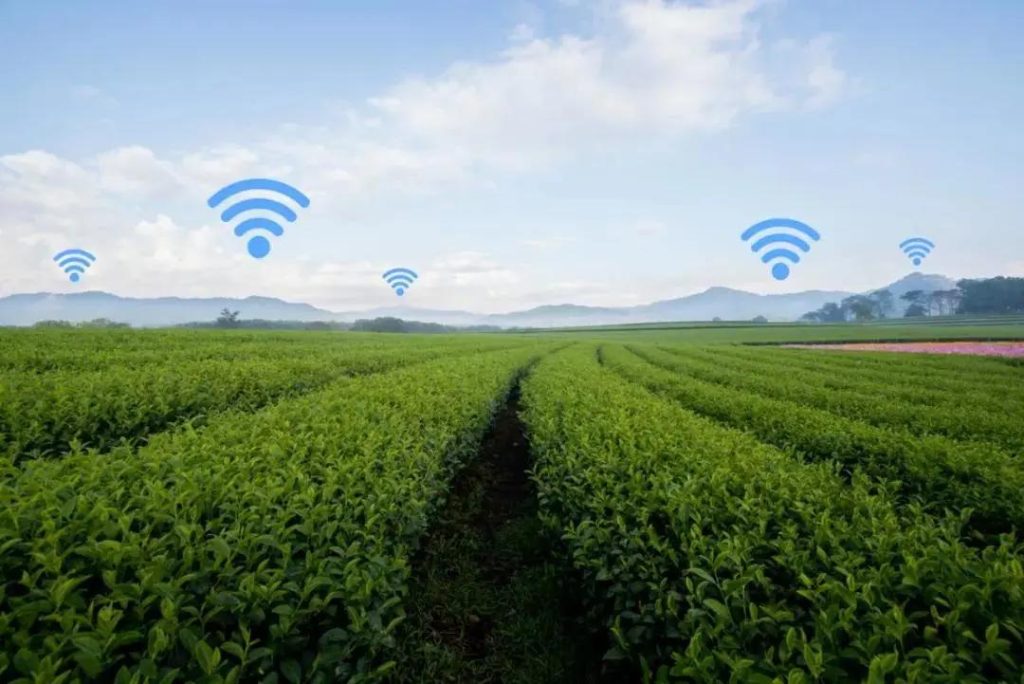Accompanied by the roar, the plant protection drone rose into the air and flew in the established direction, completing the spraying of large wheat fields in just a few minutes. The Zhihui Agricultural Digital Service Platform of Jinfeng Agricultural Machinery Professional Cooperative continuously updates drone operation data and trajectories. The agricultural machinery administrator distributes new orders to the operators based on real-time operation data.
The above scene was seen by the reporter at the wheat field plant protection site in Malantun Town, Taierzhuang District, Zaozhuang City, Shandong Province. Since 2019, in order to help farmers transition from “skilled” farming to “intelligent” farming, Taierzhuang District has utilized agricultural Internet of Things technology, supported by high-tech technologies such as spatial geography, cloud computing, Internet of Things, big data, and mobile internet, to install intelligent facilities and equipment in multiple areas of the district, achieving intelligent agricultural production and full process supervision, cost saving, consumption reduction, quality improvement, and efficiency enhancement.
According to the relevant person in charge of the agricultural and rural department in Taierzhuang District, Zaozhuang, a smart agriculture system platform and command center have been established in the area. The smart agriculture IoT system is equipped with sensing, near-field communication technology, and wireless remote communication technologies, providing IoT management, monitoring, disease and pest warning services for the entire agricultural informatization, supporting remote control functions, and utilizing mobile phones Intelligent terminal software with various media such as computers for operation.
In Yidukou Town, Lingcheng District, Dezhou, Shandong, “digitization” has become one of the main directions for embedding rural industrial development, social governance, and livable life in the town, further promoting the comprehensive upgrading and progress of agriculture and rural areas. Relying on the exploration of the new model of “Internet of Things+greenhouse”, the town has promoted a new agricultural model of digitalization, intelligence, ecology and intensification with the digital agriculture industrial park as the center, built an information platform for digital agriculture by using modern intelligent equipment, and formed a digital agriculture system of “agricultural resources+environment digitalization”, standardized planting process, digitized management and traceable products.
Based on technologies such as the Internet of Things, big data, and cloud computing in agriculture, Yidukou Town, Lingcheng District, Dezhou has built a new high standard digital wheat breeding base. According to the relevant person in charge of the town, through the model analysis of the big data platform, real-time monitoring and risk assessment can be conducted on climate change, wheat growth, disease and pest occurrence, dry and hot wind disasters, etc. This plays an important role in creating a comprehensive real-time monitoring system for wheat seed production and achieving standardization, informatization, and digitization of the seed production process.
In recent days, with the rise of temperature, farmers planting “spring sweet potatoes” are often seen in the fields of Yushan Town, Linshu County, Linyi, Shandong. Sweet potatoes, which were originally only used as breeding feed, have formed a prosperous industry in Linshu County. According to Li Celebration, the person in charge of Baoyang Family Farm in Linshu County, planting “spring sweet potatoes” has a long growth cycle and high sweetness content, which can increase yield and income by more than 30% per mu compared to summer sweet potatoes. Planting “spring sweet potatoes” in a timely manner has become a common practice in Linshu County.
As a major agricultural province in China, Shandong has persisted in taking smart agriculture as an important lever to promote the development of modern agriculture in recent years, actively promoting the deep integration and application of new generation digital technology in various aspects of agricultural production, operation, management, and service. As of the end of 2022, nearly a thousand smart agriculture application scenarios have been built, including smart farmland, greenhouses, orchards, pastures, and fishing grounds. The contribution rate of agricultural technology progress has reached 65.8%, and smart agriculture has become a new driving force and engine for high-quality agricultural development in Shandong.
It is reported that by the end of 2025, Shandong will comprehensively promote the “Lunong Code+Digital Rural Brain” platform, which will be constructed at the provincial level and reused at all levels to create a unified smart agriculture “brain” and “neural network”; Typical application scenarios such as smart agricultural parks, marine pastures, and agricultural application bases have developed to over 1500; The innovation of smart agricultural technology continues to deepen, and the contribution rate of agricultural technology progress has reached 68%.


No reply content